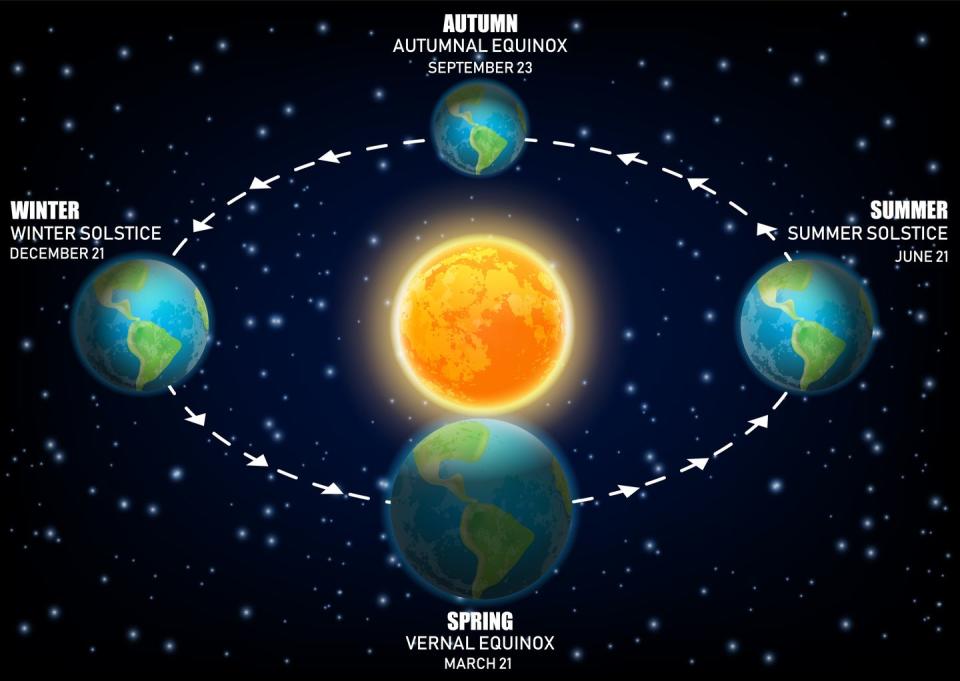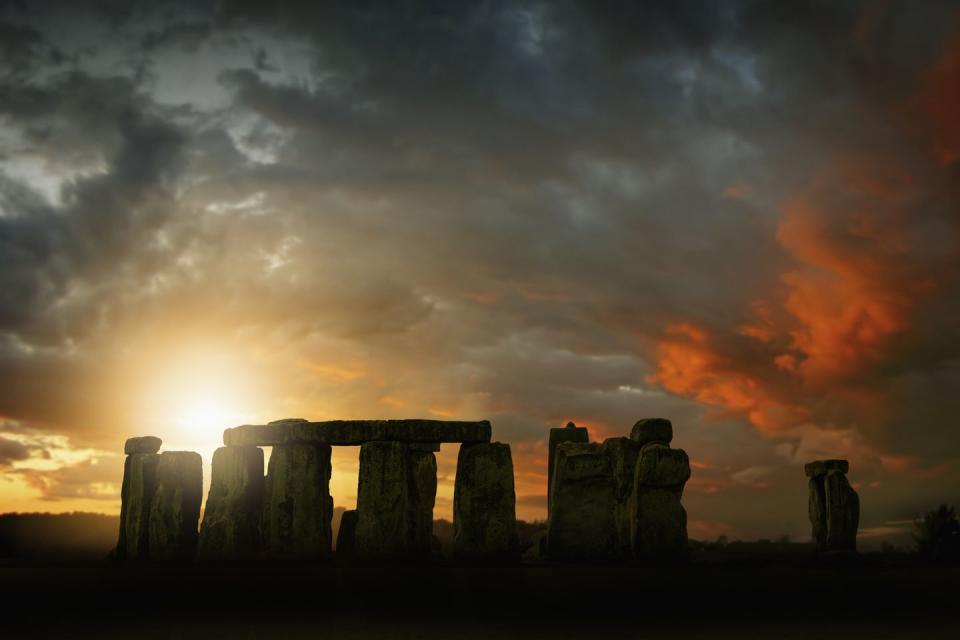So, What Exactly Is the Spring Equinox?
It happens every March 20 or 21, signaling the return of sunshine, warmer temperatures, blooming flowers, and birds, bees, and butterflies in the Northern Hemisphere. Or, for those Down Under, it heralds autumn’s arrival. But what exactly is the spring equinox?
Is it an astronomical event? A holiday once marked by the ancients? Actually, it's both. And don't let the name fool you—just because those above the equator call it the spring equinox, that doesn’t mean it jibes with the meteorological start of the season. The latter is not based on celestial occurrences, but instead the annual temperature cycle and the 12-month calendar. This year, it fell on March 1.

Because our planet is tilted on an axis, as it orbits the sun the hemispheres essentially swap periods when they receive solar light and heat most directly. The spring equinox, which takes place this year on March 20 at 5:24 P.M. EDT, marks the point in time when the sun sits directly over the Earth’s equator as it heads northward. Both hemispheres share the sun’s rays equally at the equinox, and night and day are roughly the same length. In fact, the term equinox evolved from aequus, the Latin word meaning equal, and nox, the word for night.
Along with the September equinox, known to those in the Northern Hemisphere as the autumnal equinox, the solstices also designate the start of new seasons. Occurring around the 21st in June and December, they mark the longest and shortest days of the year based on sunlight, and are reversed above and below the equator, like the equinoxes. Early civilizations found the spring equinox and these other heavenly happenings a reliable way to keep track of the seasons, and many of today’s cultures continue to pay tribute to them just as their ancestors did.

At the famed British site Stonehenge, as many as 1,000 druids and pagans still gather annually on the spring equinox to watch dawn break over the prehistoric monument. At Mexico’s El Castillo, among the Mayan ruins of Chichen Itza, even more assemble on the same date to see the sun make shadows that look like a snake slithering down the pyramid steps. And the Persian New Year, known as Nowruz, is still observed by millions on the spring equinox.
It seems that while humanity now boasts modern calendars to keep track of our seasons in the sun, where our planet spins in relation to that big, bright star in the sky remains a method worth recalling.
You Might Also Like

